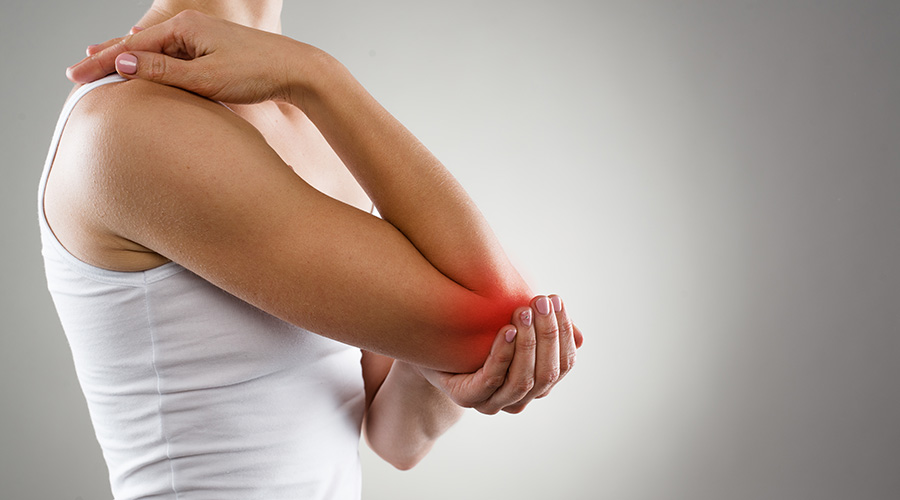
Have you felt pain or numbness in your elbow which then travels toward half of the ring and small finger in your hand? If so, you may have Cubital Tunnel Syndrome. This occurs when there is compression of the ulnar nerve within the cubital tunnel. The ulnar nerve travels down the medial side of the elbow and forearm branching off in the hand to half of the ring and small finger.
The cubital tunnel roof is composed of the arcuate ligament and floor is the medial collateral ligament. Elbow flexion tightens both the roof and the floor of the tunnel thereby causing increased compression on the ulnar nerve. Several areas near the cubital tunnel can lead to compression of the ulnar nerve.
Possible areas of compression include: near the triceps muscle called the Arcade of Struthers, within the cubital tunnel itself, near the flexor pronator group in the forearm.
Common conservative treatment techniques include forearm stretches, nerve glides, activity modification, and splinting. Forearm stretches assist in decreasing muscle tightness found in the forearm, thereby decreasing compression on the ulnar nerve. Activity modifications aim at decreasing the amount of sustained or repeated elbow flexion. Night-time splinting is used to prevent full elbow flexion. Contact your physician if you suspect pain or symptoms related to cubital tunnel.
Porretto-loehrek, A., Soika, E. (2011) Rehabilitation of the hand and upper extremity. Therapist’s management of other nerve compressions about the elbow and wrist. Pp 695-700

